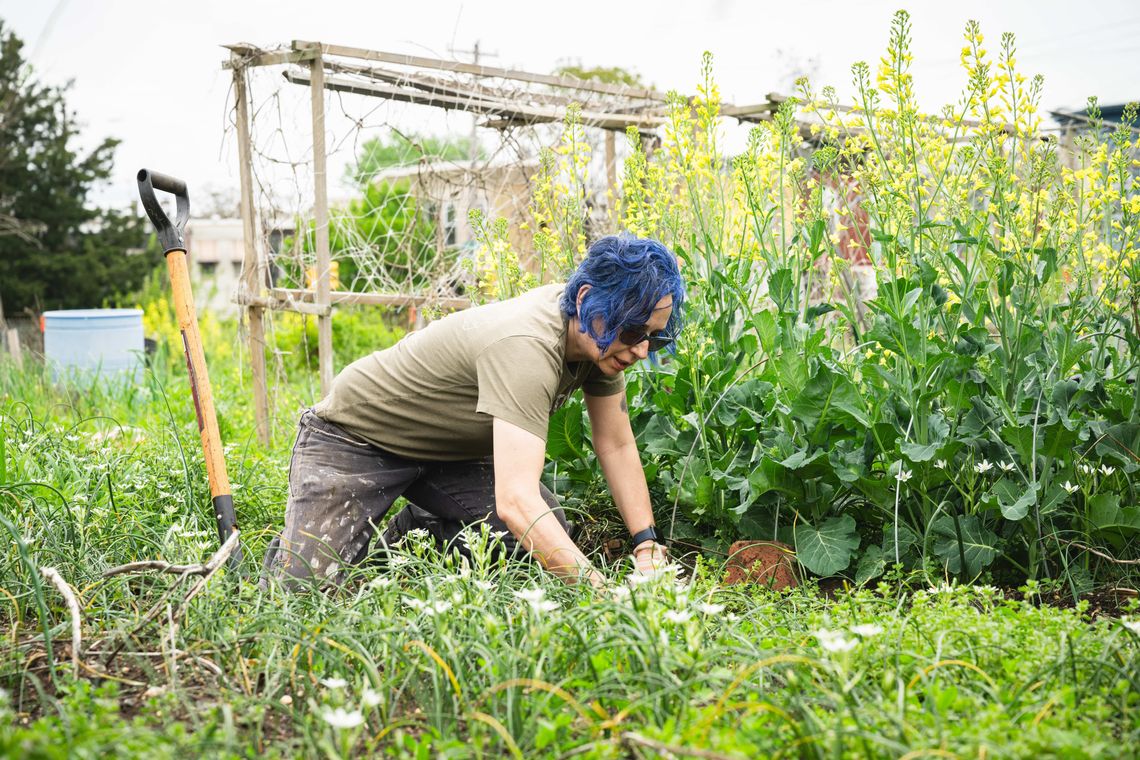



Don’t “Fall” Behind! Prepare Your Garden for the Season Ahead
seasonal tips
gardening projects
plant care

By Rachel Link
As we enjoy the barbecues and beach days of summer, it might seem strange to think about fall gardening – but now is a great time to get ready for the season ahead. Whether you’re eager for an autumn harvest or just want to give your garden a tune-up before the first frost, here are PHS’s recommendations for a fall prep plan.
Benefits of Fall Gardening
While spring is often considered the best time for planting, fall should not be taken out of the running: with consistent rainfall, cooler temperatures, and short, sunny days, fall shares many of the same characteristics that help plants get established.
Even if you don’t have plans to plant, there's still plenty to do in the garden before the first frost. The next six to eight weeks are ideal to prepare established plants to survive winter conditions and improve the overall health of your garden.
Ready Your Tools
Take a trip to your shed and find tools that gather leaves, weeds, and debris. Fall gardening includes cleanup and preparation for dormancy. Hand weeders, tarps, and rakes are essential for this time of year.
Invest in a leaf mulcher. Fallen leaves can find new life as mulch, which will protect your plants through the colder months and keep the soil healthy.
Buy aerator shoes. Fall is the perfect time to aerate your lawn. Aeration allows air, water, and nutrients to circulate through your lawn. While push aerators are a good option for larger lawns, aerator shoes are a great alternative for smaller spaces. You can find aerator shoes online from most major retailers.
Extend plant life with protection schemes like row covers, cold frames, and hot beds. Each protection scheme works a little differently, but all of them help with temperature management and can extend your growing season by up to three weeks.
To learn more about fall gardening, check out this cool-weather crop gardening guide.
Your Fall Garden Checklist
Here’s what you can do to make the most of your autumn garden.
-
Sow seeds and transplant vegetables for your fall harvest. August is the ideal time to sow peas, leaf lettuce, kohlrabi, and bean seeds to harvest in the fall. Seedlings like kale and broccoli should also be transplanted for a fall harvest.
-
Shop your bulbs to swap your bulbs. Bulbs can be purchased online to be delivered in time for fall planting, but order now for best availability. As temperatures begin to drop, you’ll want to lift summer bloomers like cannas and dahlias, placing them in a cool, dry place to overwinter so you can plant them again in the spring.
-
Visit your local garden center to select fall annuals, trees, and shrubs. Reinvigorate your garden with cool season annuals like ornamental millet, celosia, and dianthus. These should start popping up at your local garden center in the next few weeks – just in time for the new season.
-
Bring your tropicals and houseplants indoors. You might enjoy a chilly fall bonfire, but your houseplants and tropicals don’t fare well in those cool nighttime temps and should be placed indoors full time by late September. You can begin this transition now for a few hours a day to mitigate any foliage loss from drastic light and temperature changes.
Remember: September through October is the ideal timeframe to plant deciduous trees and shrubs, as they only need about six weeks for solid root growth before the ground begins to freeze. Many garden centers and nurseries will have sales to get rid of their stock before winter, so look for good deals over the next several weeks!
Check our upcoming PHS calendar page for in-person and virtual educational experiences all year long.


